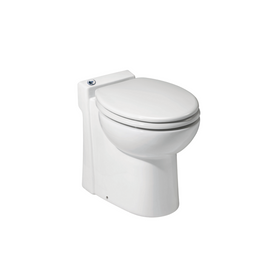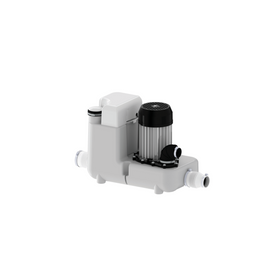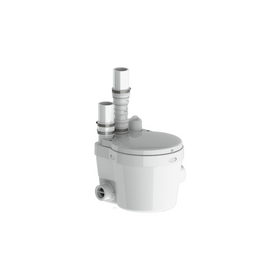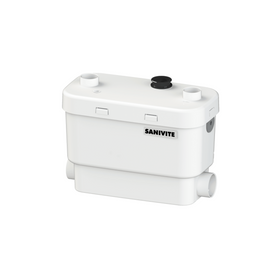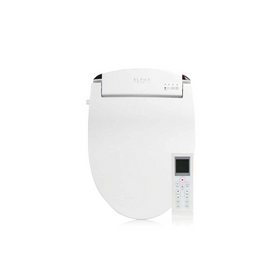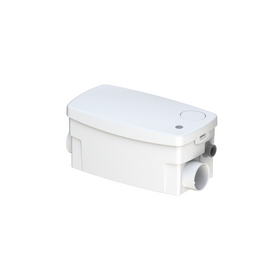
How to Choose the Right Pipes for Your Home
Last Updated: Apr 7, 2025Choosing the right plumbing for your home is a long-term decision that will impact the water you use for bathing, drinking, cooking, cleaning, growing a vegetable garden, and so much more. Whether you're building a brand new home or renovating an older home, your choice in pipes can significantly impact you and your family. So you may not want to leave that decision to your subcontractor.
In choosing, most homeowners look for pipes that have a long life, free of leaks, and other issues to minimize maintenance and accidents down the road. In addition to the time and cost required for installation, you might also consider your pipes' sustainability. These considerations should include how they're manufactured, used, and eventually recycled. Today we're looking at the three most common plumbing pipe options: PVC, copper, and PEX.
Table of Contents
- What Are PVC Pipes?
- What Are Copper Pipes?
- What Are PEX Pipes?
- Which Pipes Are Right for You?
- Should You Insulate Your Pipes?
What Are PVC Pipes?
PVC pipes are the most widely installed choice in plumbing pipes for new builds and home renovations are made from inexpensive and long-lasting polyvinyl chloride, or PVC—the third-most widely produced synthetic plastic polymer.

Benefits of PVC pipes
Extremely Durable
PVC pipes are strong and corrosion-resistant, protecting your pipes from temperature changes and potential chemicals in your water supply.
Long-Lasting
Hard plastic PVC plumbing pipes have been reported to last 100 or more years without needing to be replaced. In fact, examinations of plastic piping exposed to underground water and acid waste "show no measurable degradation after 50 years or more of service."
Easy to Install
Lightweight plastic PVC pipes are quick and easy to install, reducing the installation's overall time and cost. They can also be color-coded for easier maintenance.
Inexpensive
Man-made PVC pipes are the most widely installed because they are cheap to produce, affordable to ship, and reasonable to install.
The Sustainability of PVC Pipes
PVC passes with flying colors in sustainable communities for the plumbing pipes' safety, manufacturing process, installation, and lifespan.
PVC pipes rate high in safety for drinking water because they do not corrode and are smooth to prevent toxins and materials from backing up. A North American study of the overall safety of PVC plumbing by the Uni-Bell PVC Pipe Association (PVCPA) concluded that PVC "does not serve as [a] nutrient for bacterial growth and pathogens." This review is an excellent win for the drinkability and safety of your water. Upon initial installation, some people notice a plastic taste to their water as the plastic settles, and some residual chemicals leach into the water. This taste, however, does wear off quickly. If you're concerned, consider running your water a bit before use, allowing those chemicals to rinse out. This would be a great time to plant a new garden and give it lots of water!
The manufacturing of plastics consumes natural resources. But, a joint study done by the Plastic Pipe and Fittings Association (PPFA) and the European Plastic Pipe and Fittings Association (TEPPFA) found that "the impact of plastic pipe systems on the environment is smaller than that of traditional materials (ie: copper)." And while plastic takes much, much longer to break down in a landfill, the long life of plastic ensures your plumbing pipes won't reach one for a long time.
Are there any downsides? Yes.
Impacts of PVC Pipes
It's important to note that the production of PVC plumbing pipes off-gasses a toxic chemical called dioxin. That same chemical remains present during the lifecycle of the pipes. Your PVC pipes may also leak toxins into your water from the chemical solvent used to join piping. For these reasons, you might consider installing a water filtration system with new PVC pipes.
PVC plumbing installation can be as inexpensive as $1,500 to re-pipe a small 1-bathroom home and ranges up to $22,000 for new PVC pipe installation for a new, large home build.
What Are Copper Pipes?
Copper piping is often an attractive choice in plumbing, especially in buildings with rustic, exposed ducts, for its color and industrial look.

Benefits of Copper Pipes
Strong
Copper pipes are made from metal and are strong and crack-resistant.
Recyclable
Most copper plumbing pipes are made from recycled materials and can be easily recycled again when they reach end-of-life.
Attractive
For homes with exposed piping in the basement, kitchen, or elsewhere, copper pipes are an attractive and colorful choice.
The Sustainability of Copper Pipes
Copper pipes are uniquely beautiful and can be produced from recycled materials. However, the process of recycling copper is more energy-intensive than it is to create new plastic plumbing pipes. It's also important to remember that the mining of copper puts a great deal of stress on the earth and the workers who mine it. According to the National Institutes of Health's report on Major Issues in Miner Health, "over time, intensive mining has exhausted many of the world's richest veins, seams, and quarries, including lodes of iron ore and copper in the US Mine operators, generally must mine deeper and more extensively to extract sufficient yields." And worldwide, the report continues, "mining is one of the most dangerous occupations," as there are more fatalities and health risks than other industries.
The drinkability and usability of water transported through copper plumbing pipes are incomparable to plastic. Copper pipes are subject to pitting and corrosion, causing small particles to break off into your water, especially when exposed to chemicals and temperature fluctuation. If you do choose to move forward with copper plumbing pipes, consider splurging for epoxy-lined options. This upgrade will both improve water quality and extend the pipe life by 50 years. Otherwise, you'll need to use a phosphate chemical additive to reduce pipe wall corrosion. Keep in mind that phosphates increase algae bloom and other toxic growth in both your water and sewer drainage to local lakes, rivers, and oceans.
Copper is the most expensive option, starting at $5,000 to re-pipe a small home and upwards of $20,000 for a large house. And, they may need replacement sooner than plastic, adding to lifecycle cost.
What Are PEX Pipes?
PEX is a new and more modern version of PVC piping, incorporating pipe flexibility for improved usability and functionality.

Benefits of PEX Pipes
Flexible Construction
PEX pipes are built to flex, making them a contractor's top choice for their ability to bend without the need for joiners. Beyond installation, these flexible pipes can also expand to 3x their normal size. This expansion reduces the damage caused by standing water freezing in the lines in the colder months.
Long-Lasting Durability
Like PVC, PEX plastic plumbing pipes can last 100 years or longer without degrading. They also resist common concerns of pitting, scaling, and corrosion.
Low Thermal Conductivity
PEX are made from thick-walled plastic. They will keep hot water hot longer, giving your water heater a break. They also collect less condensation with cooler, even freezing water.
Easy to Install
The flexible construction and lightweight design of PEX plumbing pipes make them quick and easy to install, saving you both time and money in the initial installation.
The Sustainability of PEX Pipes
Like PVC, PEX (cross-linked polyethylene) piping also rates high with regard to sustainability for manufacturing, transportation, and lifetime use. Plastic requires natural resources, and chemical off-gassing occurs during production. Still, its overall environmental impact is lower than copper counterparts, especially when you consider the 100+ years of life you'll get from PEX plumbing pipes. And while PEX plastic will take a long time to break down in a landfill, it'll be many years before that time comes.
Drinking water piped through PEX plumbing is considered very safe, so long as you choose NSF-61 or NSF-PW options. These are tested and graded for their resistance to leaching harmful chemicals. Unlike rigid PVC pipes, flexible PEX pipes bend around corners effortlessly, limiting the need for glues and solvents in installation. That means fewer toxins in your water overall. Homeowners may notice that plastic taste immediately following construction. But, again, that will wear off as the water washes through them.
Like PVC, PEX plumbing pipes run 20%-40% cheaper than copper pipes. PEX plumbing installation can cost as little as $4,000-6,000 for a 1,500 square foot 2-bedroom home and up to $21,000 to install new PEX plumbing in a substantial, new home.
Which Pipes Are Right for You?
Choosing new pipes for either a new home or remodel comes down to your location, water quality, and budget, but if it were up to us at Rise, we'd pick PEX. If you live in a cooler climate subject to freezing or have exposed pipes in un-insulated areas like a basement, the flexibility of PEX piping will save you the trouble and subsequent repairs of frozen pipes. Before making your final decision, talk to your plumber, or renovator about your options. They may be able to offer additional insights regarding your unique home.
Should You Insulate Your Pipes?
Regardless of which type of pipe you choose, it's always best practice to insulate your pipes. Foam is an inexpensive and easy choice and will reduce overall hot water pipe heat loss by 80%. Alone, insulation can raise your water temperature by 4 degrees.
This boost allows your water heater to do much less work to keep water warm and heat your shower more quickly. Insulation will also help prevent any plumbing pipe option from sweating and dripping condensation inside your walls. Pre-slit insulated foam wraps for your piping can be easily purchased from your local hardware store. This six-foot option from Home Depot costs less than two dollars. Just be sure to measure your pipes' diameter first, as they come in ½ inch, ¾ inch, and one-inch diameters. You can easily cut them to the right length and can install them yourself in minutes. So even if you not in the market for new pipes, you can save energy and money by paying attention to your pipes!
Laura Bourland
Laura grew up in the California suburbs, far removed from environmentalism, but nature always has a way. She uprooted her life in 2015, moving to the countryside of Washington to live a more sustainable and simple life on 12 acres. She and her fiancee are learning on the job as they attempt everything from gardening and natural pest control to eco-friendly building and home improvement.


